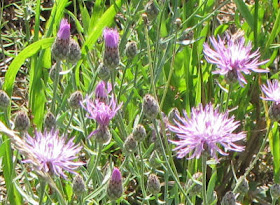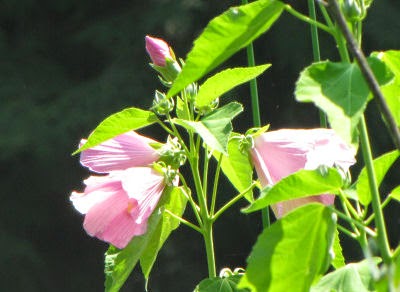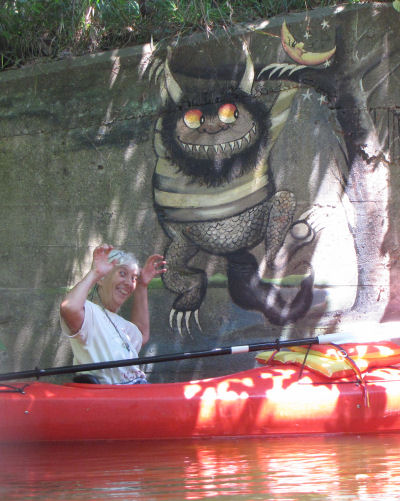
At least in the eastern US, the bad, bad plant is the Spotted Knapweed. This is the answer to the post
Purple in the Fields - Pick the Bad Plant
It was interesting to me that each of the plants had at least one guess. Let me tell you about the others first. The Big Bluestem is a native prairie grass that is actually very desirable. You might not want it in a garden, but I'm SO glad that there is a big patch of it filling in the field. It's tall- 6-7 feet.
The mistflower is native to the US. It does not seem to be a pest in our area. Actually, I've only seen it a couple of places other than in my field. I'm amazed at how happy it seems here. I transplanted some to the east side of my house because it seems able to take the hot morning sun bouncing off the house.
Most interesting was Julia's response. She really knows plants, but I think each of us would be lost in the other's home space. She identified it as Himalayan Blackberry, a genuine invasive pest in the west. I don't think we have that one here yet. This is probably
Rubus hispidus, although they hybridize.
So we are left with the Spotted Knapweed. Betchai call it right. She's looking like a bit of a plant expert herself with two correct IDs in the past week! Why is this such a bad plant? There are several reasons.
1. It is not native to the US, but to Eastern Europe. When plants are moved to spaces where they were previously unknown they tend to either die out or become aggressive. This is because all of the natural checks and balances don't usually come with them, such as insects or animals that eat them.
2. It has a long tap root that outcompetes other plants for water. Anyone who has tried to manually control this plant knows how difficult it is to pull up. You really can't get it all up unless the ground is moist.
3. It produces a LOT of seeds. Once the spotted knapweed gets started in an area it will soon be found everywhere.
4. It tends to be passed over by grazing animals. It is less palatable than many other plants. Cows, deer, rabbits, etc will leave the spotted knapweed and preferentially eat other plants, leaving the knapweed to propogate.
5. There is some evidence that it is allelopathic. This means that it can exude chemicals that inhibit the growth of other plants in the vicinity.
Just about the only way to eliminate this plant is to get an army of people to pull plants on a regular basis. This is a never-ending job, so except for perhaps small areas, it can't be eradicated.
My point of this post is to remind everyone that there are invasive plants where you live! Learn how to recognize a couple of them, and do what you can to prevent their spread.










 Meet David. He's the cutie on the right. The other little guy is my Steve. Yup, this was a while ago, 1978 to be exact. But this was the year I met David. His mom is my best friend and hiking buddy, Marie.
Meet David. He's the cutie on the right. The other little guy is my Steve. Yup, this was a while ago, 1978 to be exact. But this was the year I met David. His mom is my best friend and hiking buddy, Marie. 



